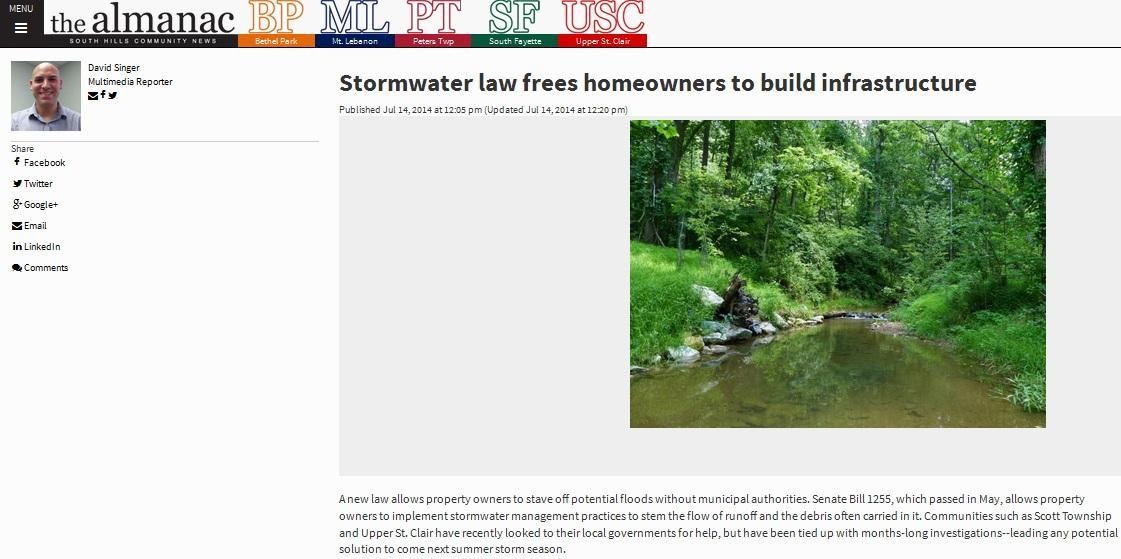Sometimes, when you want solutions to your inclement weather problems, like stormwater best management practices (BMP), you are left to your own devices to create these solutions. Government protocols and bureaucracy could unintentionally delay solutions from being implemented immediately. Thus, one city decided residents should be given the go-signal to initiate measures to solve flooding problems, as reported by David Singer, for The Almanac in Pittsburgh, PA:
A new law allows property owners to stave off potential floods without municipal authorities. Senate Bill 1255, which passed in May, allows property owners to implement stormwater management practices to stem the flow of runoff and the debris often carried in it. Communities such as Scott Township and Upper St. Clair have recently looked to their local governments for help, but have been tied up with months-long investigations–leading any potential solution to come next summer storm season.
The dangers of storm water runoff are too prevalent for Americans to ignore. The Environmental Protection Agency notes that storm water carries multiple pollutants into a storm sewer system and later contaminates fresh water supplies. Worse, aquatic habitats are destroyed by sediments and fish death occurs from algae saturation.
When you have the opportunity to protect your household from the grey or black water that comprises storm water runoff, a provider of stormwater BMP such as HydroLogic Solutions is prepared to work things out with you. The company supplies the StormChamber, a management tool for controlling storm water runoff.
Signed by PA Gov. Tom Corbett as Act 123 of 2014, the SB1255 amends Title 53 of the Pennsylvania Consolidated Statutes, which governs the responsibilities of municipal water planning authorities. Instead of the local government establishing special measures to guide property owners on storm water BMP, it empowers public or private property owners to do their own runoff mitigation measures. Some incentives can be offered for putting up these measures, which may include setting up rain gardens, adding pervious surfaces adjacent to other properties, or installing green roofs.
Some companies like HydroLogic Solutions can take the process to another level by installing chambers in the middle of a covered pit supported by soil and stone bases. The tanks will gradually fill up as more water come in, but are emptied at slower rates. In many cases, the storm water may be recycled for non-potable uses such as irrigation.
A legal push for homeowners to protect their property from the ravages of storms is a good thing. When asked to comment on SB1255’s enactment, the article says PennFuture central Pennsylvania outreach coordinator Jennifer Quinn lauded it as a “big success” in reducing storm water impact and having more places for water activities.
(Source: Stormwater law frees homeowners to build infrastructure, The Almanac, 14 July 2014)






